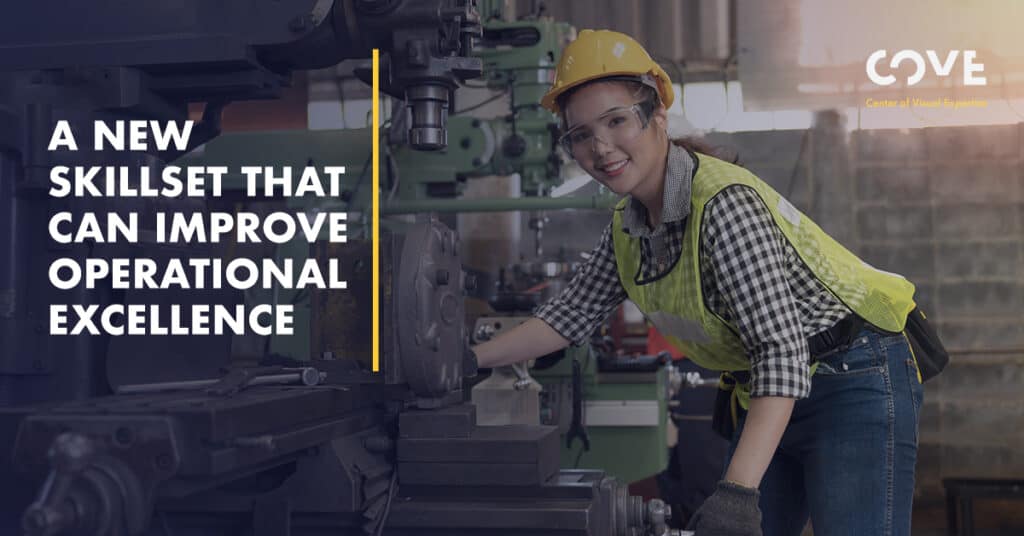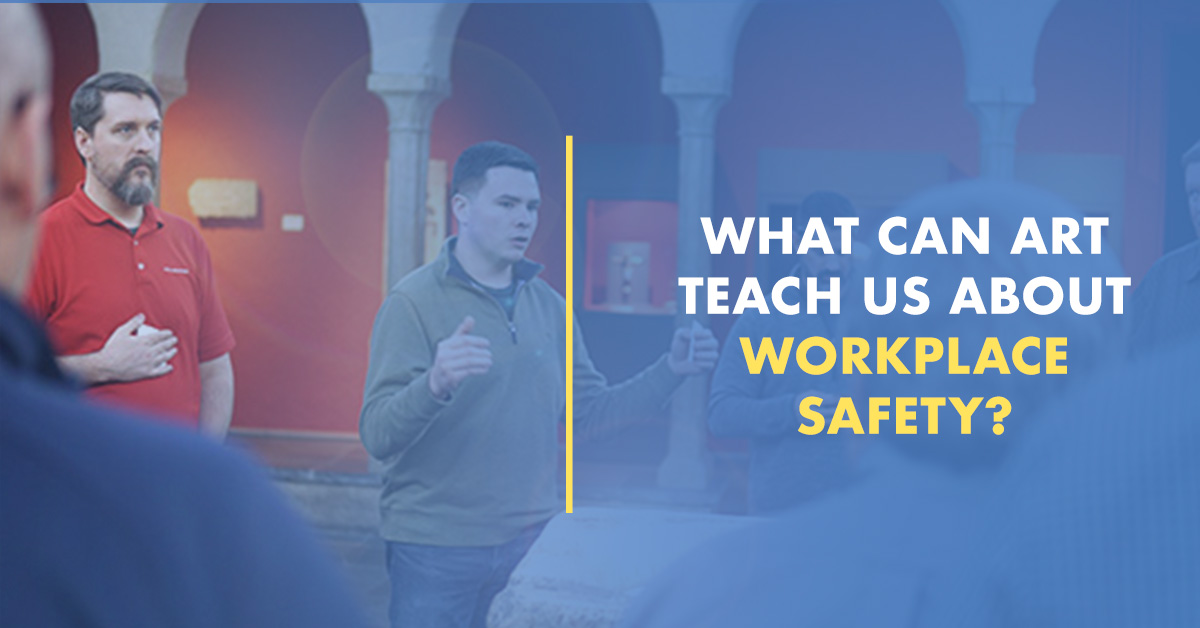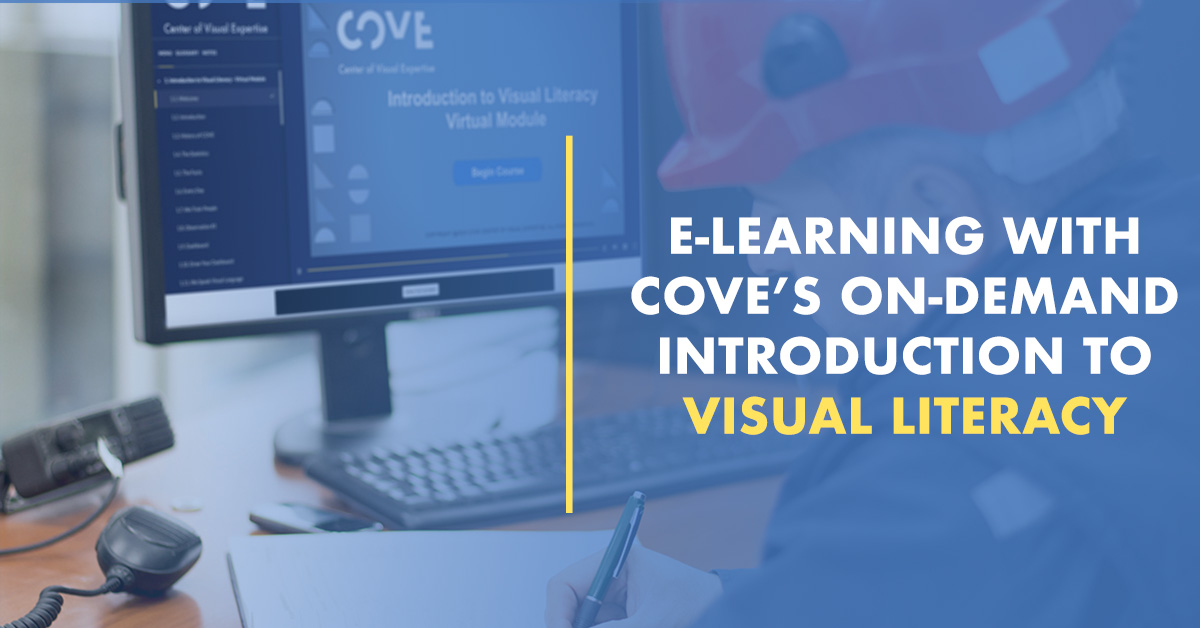“We continue to learn about the importance of Visual Literacy not only in the area of our initial focus – safety – but in all aspects of operational performance,” says Doug Pontsler, chairman and managing director of Center of Visual Expertise (COVE). In this blog we examine how Visual Literacy improves operational excellence through superior asset management, effective and continuous reliability programs, proactive maintenance, and efficient business systems and processes that reduce waste and defects and increase uptime, control inventory, optimized scheduling and seize opportunities to continuously improve.
It hinges on people. Operational excellence cannot be achieved and sustained without the decisions, ideas, problem-solving and auditing/monitoring of senior leaders, supervisors and front-line operators. “It’s a people-oriented philosophy,” says David Veech, a senior lecturer in the Fisher College of Business, The Ohio State University, teaching in the Master of Business Operational Excellence program. Operational excellence is commonly looked at in terms of eliminating waste. But Veech says it is more of a value generator.
And to achieve that value, we need people – leaders, supervisors and operators — looking at processes, equipment, work spaces, maintenance practices and forms of visual communication to see, describe, analyze and interpret, and communicate improvement plans or corrective actions. Visual Literacy, the ability to See the Whole PICTURE®, is an effective tool to pull from the operational excellence toolbox. The skills inherent in Visual Literacy are enablers. They increase the capacity of individuals, teams and the organization to see, understand and create action plans to make operations more efficient, faster, easier, safer; with less waste, defects and waiting time. Employees are enabled to make more of existing products or make new products.
One way this is accomplished is by teaching workers to “see” with more detail and clarity. “You learn how to really see what maybe you’ve seen 100 times” – a piece of equipment, tool, a work station, a process, work space or operational teamwork that’s less than optimal, says Veech.
Visual Literacy methodology, or visual acuity skills, as taught by the Center of Visual Expertise (COVE) enables operational improvements on both a macro and micro scale. Not just by recognizing worn equipment in need of repair (micro) or spotting process defects and work flow bottlenecks (macro), which are negatives detrimental to operational excellence. But by also seeing and acting on problem-solving solutions and opportunities that increase productivity, quality, housekeeping, safety, asset management, operational reliability, teamwork and employee morale.
Studies on job satisfaction document that the more people are engaged for their insights and observations, kept aware and informed of the status of the “big picture,” the more satisfied they are.
“A common complaint you hear is, ‘I’m only one who works around here’,” says Veech. “That attitude goes away when you can see others who are really good at something.” Seeing beyond commonly-held beliefs, norms and values that can under-cut operational excellence is gained through improved Visual Literacy skills. Visual Literacy teaches us to take nothing for granted; that everything in work – whether it is behaviors, procedures or conditions — deserves closer and more careful examination, followed by accurately describing these visual inputs, analyzing and interpreting what’s been taken in, and then reaching conclusions and/or making decisions. Action plans are communicated to all who need to know to close the loop, raise “big picture” awareness, and job satisfaction.
Let’s look at several specific ways Visual Literacy benefits operational effectiveness:
Eliminating defects
We do a lot of looking, but not always really seeing the reality of what is occurring in front of us. Leveraging lessons that are taught in art education and known as visual literacy, we have the ability to see details that we often miss – that are part of the background. Examples include:
- Defects flowing in or with raw material
- Defects from the misuse of an asset or equipment
- Defects arising from maintenance repairs
- Defects from bad, counterfeit, old or damaged spare parts and materials
- Defects from process insufficiencies or mistakes in design or installation
Uncovering hidden problems in systems and processes
- Analyzing and interpreting complaints from operations, and also:
- Complaints from maintenance personnel
- Reasons for low worker productivity
- Reason for schedule miss
- Downtime incident causes
- Low warehouse service levels
- Repetitive jobs performed the most times per year leading to boredom, fatigue, defects and errors
- Recognizing the maintenance job that are most costly and analyzing why these jobs are the most costly
Solving each of these “hidden problems” requires critical thinking skills essential to Visual Literacy. These skills include observation, analysis, interpretation, reflection, evaluation, inference, explanation, problem-solving, and decision-making. Equally important, common cognitive biases or blinders must be understood, recognized and dismissed to accurately see “hidden problems.” Biases include: prematurely seeking to confirm what we already believe; attributing failures not to ourselves but others; over-estimating positive outcomes if we are in an optimistic mood, and over-estimating negative outcomes if in a pessimistic mood; going along with what peers believe (the bandwagon effect or groupthink); and over-estimating our knowledge and competence.
Ineffective maintenance
Engineers design equipment and processes to meet product specifications. They may or may not consult with operators or maintenance about the ease of keeping the equipment and processes running. Operators do their best to assure the process is running smoothly. But if a breakdown occurs, the call goes out to maintenance to get the process back in production. Too often maintenance is under-funded and under-staffed, and it comes to the rescue without the drawings and parts necessary. They have received a poor description of the problem and are working rushed, under the gun.
Plant-wide reliability improvement requires these Visual Literacy recognition skills:
- Accurate description of process or equipment problems
- Knowledge of the current operating performance and goals for improving this performance (expectations)
- Managing equipment health depends on the interdependence and interconnectedness of every job function (a holistic view)
- Each piece of equipment has an operating performance specification and gets the attention necessary for it
- The need for failure analysis when unacceptable breakdowns of processes and equipment occur
- Maintenance and operations must be partners collaborating in ways to improve equipment health
Managing fixed assets effectively
Fixed asset management is an effective process of tracking and maintaining an organization’s physical assets to prevent any kind of losses. This involves tracking equipment, vehicles, machinery, buildings; assessing their condition; and keeping them in good working order. Tracking or monitoring requires visual observation skills. Tagging fixed assets and making sure tags stick with fixed assets correctly and stay with assets requires looking, observing, and truly seeing. Verifying the correctness of fixed assets tagged and replacing them immediately if tagged incorrectly also requires looking, observing, and seeing. And physical verification of assets by periodically inspecting each asset individually calls for assessing its condition and maintenance, and scanning all physical assets and matching with supporting documents and corresponding invoices (Seeing the Whole PICTURE®).
Conducting energy audits
An energy audit systematically identifies and develops opportunities to help reduce energy use in a facility, resulting in decreased building operating costs. Maintenance and engineering managers take charge of these audits. Visual Literacy skills of observation and analysis help determine the areas and systems to include in an audit, and deliver the detailed descriptions and analyses derived from these audits. Using these skills helps managers select the audit level that fits the needs of the building and organization.
Proactive walkthroughs
This exercise is how we catch small facility problems before they become big ones. Addressing small details can add up to huge improvements in appearance and functionality. Applying Visual Literacy tools and techniques give us an opportunity to see things that fall into the background, things that we may overlook because they are so familiar. Details can emerge that indicate safety and operational problems – fluids leaking on the floor, equipment vibrating and needing adjustment, wear points indicating potential upcoming failures, etc. This careful focus on the small things brings into play Visual Literacy’s emphasis on first looking, then observing more closing, and finally seeing what you very well might have overlooked before.
These walkthroughs allow us to be, in the word of David Veech, thermostats, not thermometers. Thermometers give us immediate readings. But thermostats control to a greater extent overall facility conditions. Being a thermostat is akin to Seeing the Whole PICTURE®
Effective visual management and communication
Too often operators are overloaded, overwhelmed by data. So much data is collected today thanks to technology, it’s difficult to resist the temptation to put it all out there on displays and scoreboards. But operators don’t need to know every available bit of data. We don’t want operators to get lost in too much data “noise.” Analyze and recognize what data is truly important to operators. Then don’t hide it, as is too often is the case. Scoreboard type can be too small, doesn’t use contrasting colors, and scoreboards or displays may be placed in poorly lit spaces, in shadows, or where operators seldom go. Keep the importance of Visual Literacy in mind.
And for operators to fully digest the data presented, they need to be allowed to slow down to process information. Slowing down is a critical component of Visual Literacy methodology that applies to every area of operational excellence we’ve discussed. David Veech says it is counter-intuitive, yet proven by studies: slowing down, balancing the need to produce with the need to observe, analyze and communicate, actually increases system velocity. Operators are loaded up with work. Their jobs are enriched and overall operational excellence is achieved when leaders allow time to slow down, identify and solve problems, work on maintenance, report potential risks, and share ideas. The principles of Visual Literacy align with the drivers of operational excellence.
Taking the First step in Visual Literacy
Curious about how to get started with Visual Literacy? Many of the tools discussed in this blog are taught every month during the Foundations of Visual Literacy workshop. Held virtually and at the Toledo Museum of Art, this workshop provides tools and methodologies to help you slow down and see, understand and create action plans to help you and your organization achieve the operational excellence mentioned.
Learn more about our virtual and in person workshops




